The monstera siltepecana is one of the lesser known monsteras, but its beauty makes it a standout plant. Read on for this in-depth care guide on the monstera siltepecana.
Table of Contents
Monstera Siltepecana Background
The Monstera Siltepecan is originally native to Central America, but it can also be found in southern Mexico. It gets is scientific name from the Mexican town of Siltepec in the southern Chiapas region.
The Monstera siltepecana is one of the most beautiful members of the Monstera genus. The siltepecana was first recorded in the late 18th century by John Donnell Smith. Other common names for the siltepecana include the silver monstera and hurricane plant.
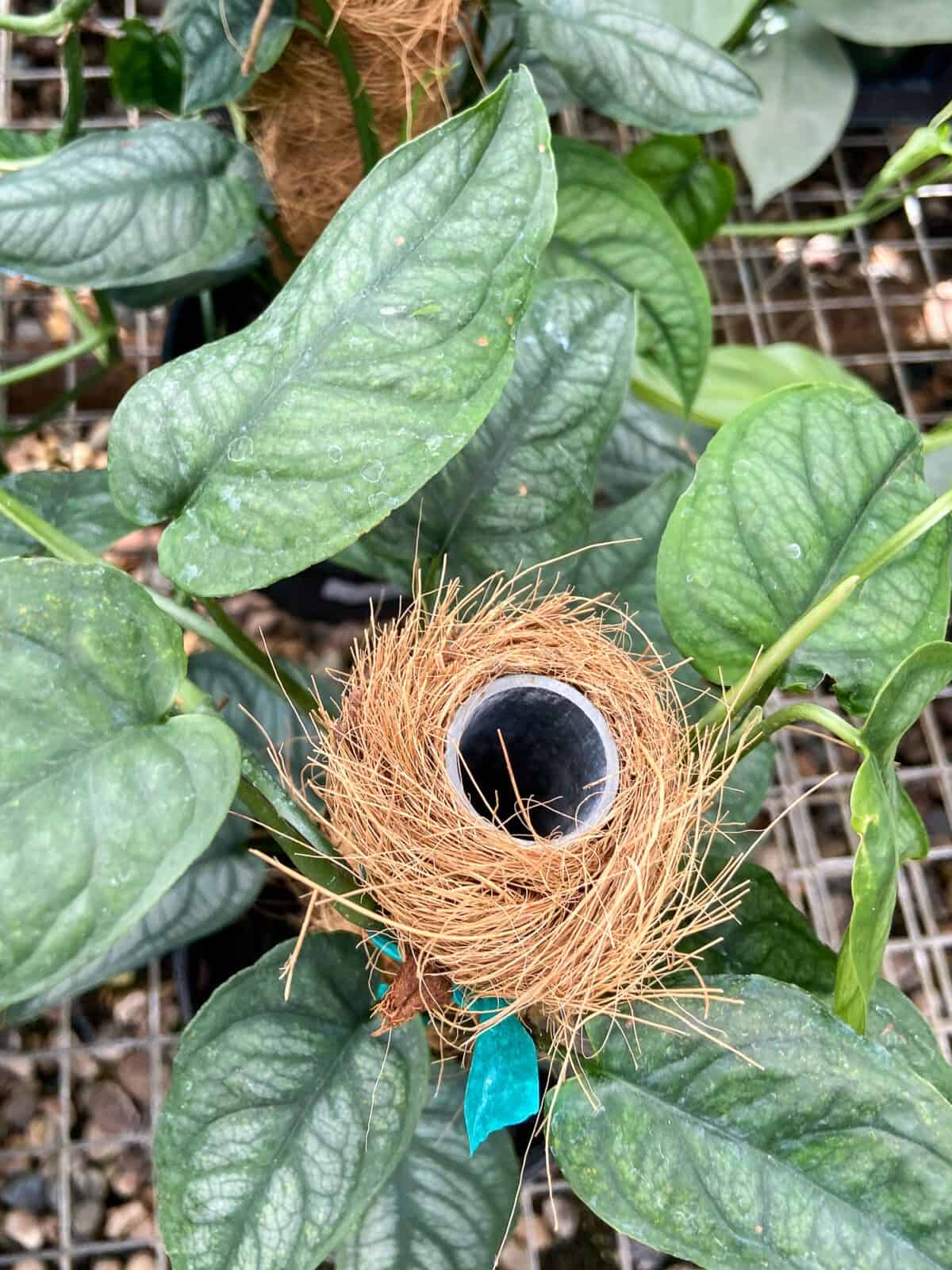
In the wild, these plants are epiphytic. Epiphytes do not grow in traditional soil, which tends to be too dense and heavy for this plant’s root system. Instead, it prefers to use trees or mossy rocks to grow from.
The monstera siltepecana plant grows best in a rainforest near a tree. This allows the monstera siltepecana plants to achieve maximum airflow between its roots system. The monstera siltepecana grows relatively rapidly as a vine.
Although it is commonly grown as a houseplant, the silver monstera is capable of being grown outdoors if the climate allows for it. These plants thrive in hot, humid weather and are only hardy in growing zones 9 through 11.
True to their common name, the silver monstera is identifiable by their silver leaves, which are adorned with a dark green vascular pattern. It is sometimes referred to as the silver fox of the family.
The leaves are an elongated heart shape and can grow to be rather large. The plant itself is capable of climbing if provided a moss pole, or alternatively, it will hang from a basket planter. They can also be grown in a terrarium.
The leaves of the monstera siltepecana will remain in their juvenile form if grown in a hanging basket or terrarium. But at full maturity, these plants are capable of growing up to 8 feet long when grown with sturdy support and in an outdoor setting.
Just like all other members of the Monstera genus, the monstera siltepecana is toxic to both humans and animals. If you do own this plant, please be advised to watch pets and children carefully to avoid unintentional consumption of this plant.
The monstera siltepecana plants contain oxalate crystals which irritate the mouth, lips, tongue and digestive system when ingested.
Monstera Siltepecana Care
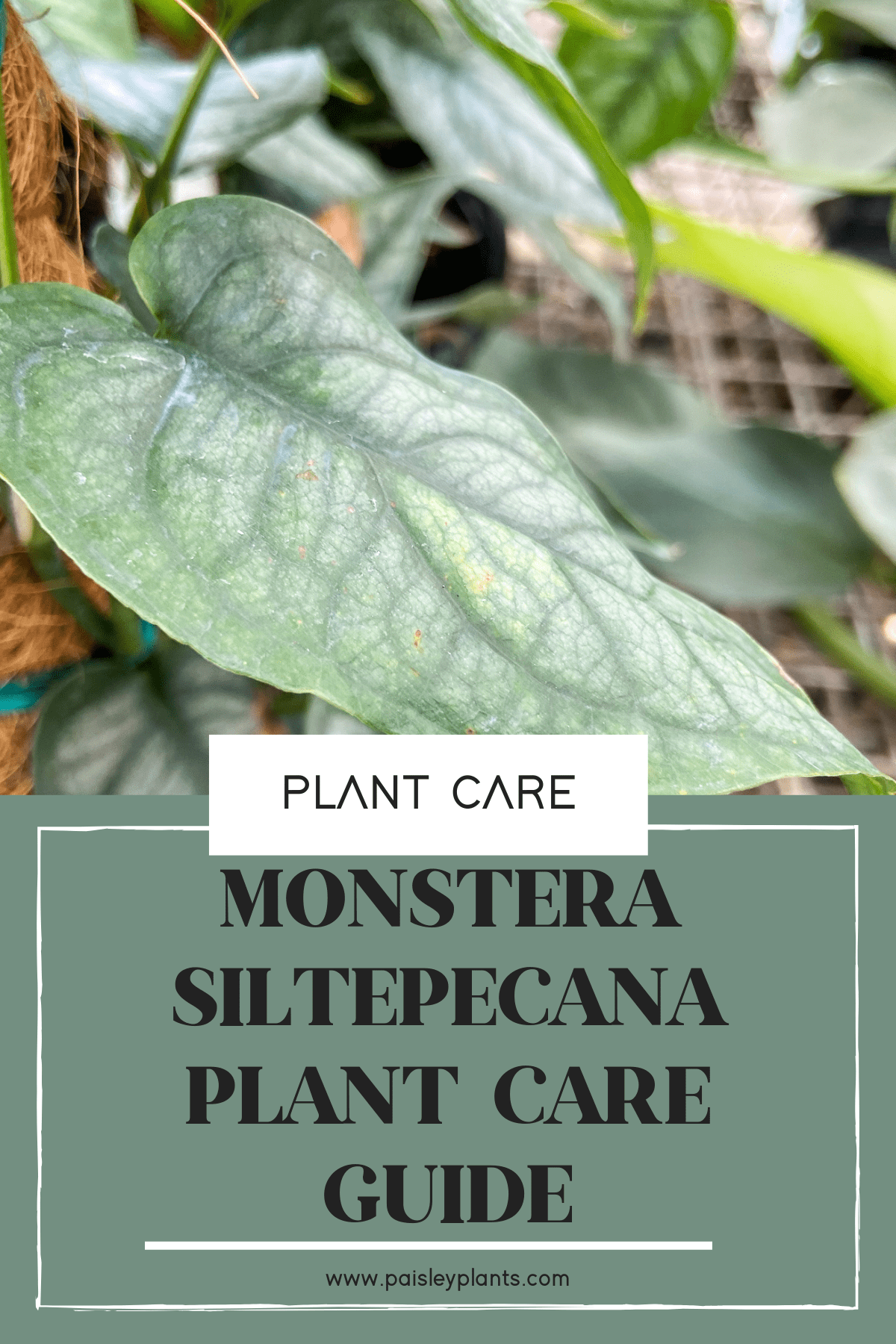
This post includes affiliate links.
Sun & Light for Siltepecana Monstera
As with other tropical houseplants, your monstera will grow best under bright, indirect light. This can work well in an east-facing window.
While this plant is able to tolerate a few hours of direct light in the mornings, prolonged amounts of direct sunlight can damage the leaves. Too much strong direct sunlight can lead to burning the leaves of your plants.
If your monstera siltepecana leaves begin growing further and further apart and the plant begins looking sparse, you may need to move the plant to a brighter location. If the leaves begin to fade, it may have been exposed to too much sunlight.
Soil Type
As an epiphytic plant, the monstera siltepecana will require a light, aerated soil. Many plant owners prefer to plant their monstera in an aroid potting mixture.
This mix will provide air pockets used to promote airflow in between the roots, while at the same time retaining just enough moisture to keep your plant nourished. If the soil is too dense, you will run into problems. Aroid potting mixtures tend to be more on the acidic side, with a pH level between 5.5 to 6.5.
You can purchase aroid potting soil, or make it yourself using few ingredients. Combine 3 parts clay pebbles (or orchid bark), 2 parts perlite, 2 parts coco coir, 1 part pumice, and 1 part sphagnum moss. The sphagnum moss will help retain a certain level of humidity in the soil for a prolonged time.
Watering Tips for Siltepecana Monstera
Your monstera’s soil should be lightly moist, yet it is important not to water it too much to cause soggy soil. Once a week watering is usually sufficient.
A good rule of thumb for your monstera siltepecana plant is to wait until the first few inches of soil has dried up before you water your plant. If you live in a dry climate, you should water your monstera siltepecana while continuously monitoring the soil conditions.
It is important not to let your plants get too dry or the monstera siltepecana bottom leaves will start yellowing. The tips of the leaves may also turn brown if the soil becomes too dry for too long.
You should also avoid overwatering your monstera siltepecana plant. Consistent watering is important to avoid these type of plant problems.
Fertilizer for Siltepecana Monstera
A regular fertilizing routine will help ensure that your silver monstera grows vigorously throughout its growing season. Select a balanced liquid fertilizer and dilute it to half strength. Apply this fertilizer during only the spring and summer; this is when your monstera siltepecana will be the most active and require extra nutrients.
All fertilization should stop during the fall and winter when your monstera siltepecana goes dormant. Fertilizing a plant when it has no use for it can cause the residual fertilizer to acidify the soil to uninhabitable levels.
The excess nutrients won’t be taken up and may actually damage the roots if left to sit in the bottom of the pot.
Temperature & Humidity for Monstera
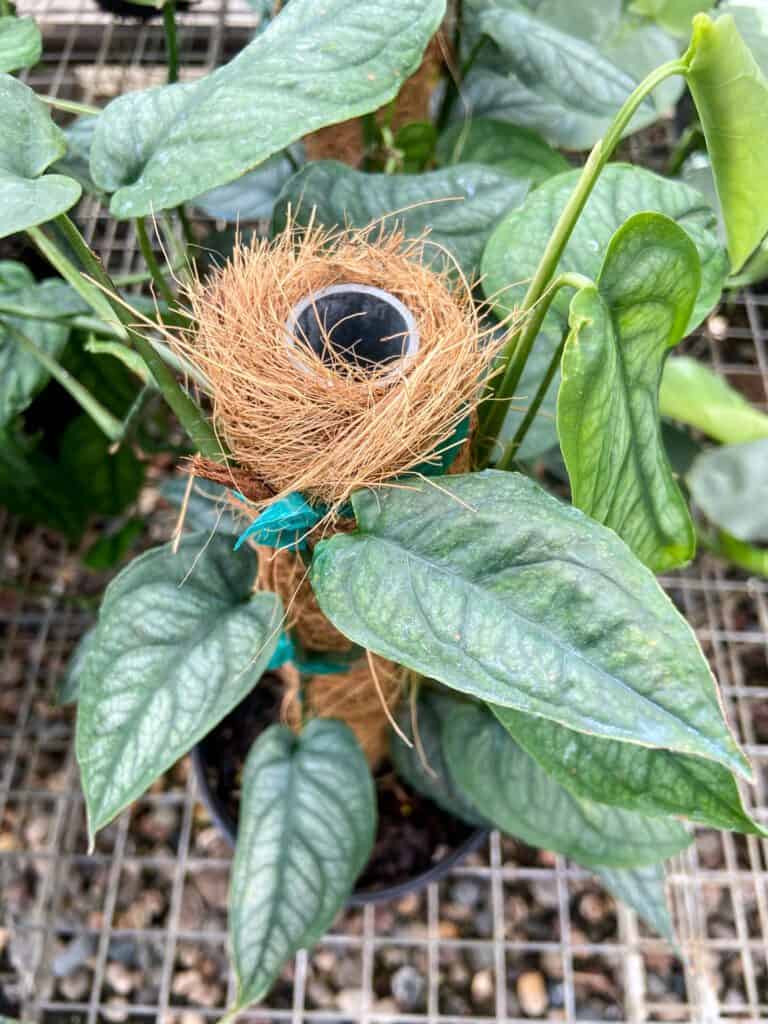
As a tropical plant, the monstera siltepecana prefers warm, humid air conditions. The ideal temperature range for this plant is between 60° and 95° F. As for humidity, try to maintain a percentage of 60% or higher.
If your home tends to be on the dry side, you can add an electric humidifier or a pebble tray as effective methods to increasing the humidity. A monstera siltepecana grows best in humid conditions. Placing your houseplants closer together also keeps the humidity level higher.
Monstera Pruning & Maintenance
Regular pruning is always recommended to not only encourage new, bushy growth, but to control the size of your plant in order to prevent it from becoming too leggy and unruly.
Regular monstera siltepecana care is important because these plants are naturally climbing. They should be provided with a pole to climb on or they may not grow to their full potential or maturity.
We always recommend plant owners begin pruning by sterilizing their equipment. Just a dunk in rubbing alcohol can effectively clean harmful bacteria from your pruning shears.
Cut away any leaves that are damaged or diseased. These parts are a hinderance to the new, healthy growth that your monstera siltepecana is trying to create. After that, you can proceed to cut down the plant’s length to your desired results.
Choosing a Container & Repotting a Mature Monstera Siltepecana
When selecting a container for your monstera siltepecana, it is imperative that your plant pot has multiple drainage holes in it. These drainage holes allow the excess water to pass through, which leaves the soil perfectly moist without drowning the plant.
You can also put a tray underneath your pot to catch the excess water. However, do not leave water sitting in the tray for any length of time.
The monstera siltepecana is a fast-growing plant and will therefore require yearly repotting in order to accommodate its quick growth rate. Typically, you’ll know it’s time to repot your silver monstera when its roots start poking out of the drainage holes in the bottom of the pot.
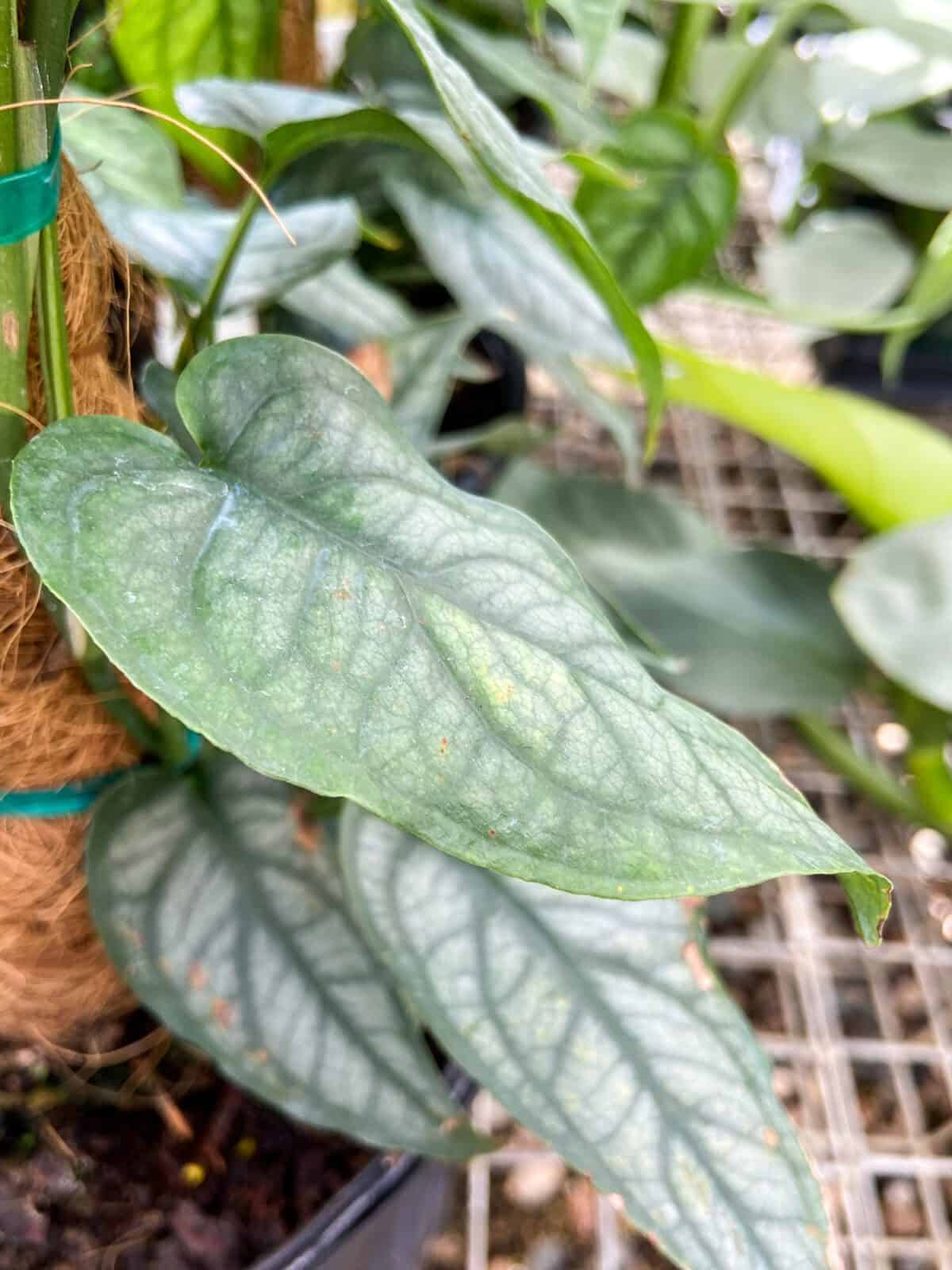
When you shop for your plant’s new container, please be sure to size up very gradually. A good rule of thumb is to choose a pot only one size larger than the current pot.
Having the proper size pot will also help to maintain healthy growth by not allowing your monstera siltepecana to dry out too quickly.
Moving your monstera siltepecana plant into a container that is too large can actually be counterproductive and cause stress to your plant.
How to Propagate a Monstera Siltepecana
The monstera siltepecana plant can easily be propagated by rooting stem cuttings into water. Tiny roots will usually grow at each node where the leaves attach to the stem or vine. Follow these simple steps for propagation to learn more:
- Take a cutting from your monstera siltepecana plant. This cutting should be healthy and undamaged with at least one node and 1-3 leaves. This cutting should be taken from a mature node to ensure it will grow quickly.
- Fill a small jar with water and place the stem into the water, completely submerging the area where you cut into. Be careful not to get any of the leaves wet, as this can cause the cutting to rot instead of propagate.
- Place the jar in a location that receives bright, indirect sunlight such as a windowsill. Change out the water once every week in order to avoid the risk of bacterial infection.
- It takes roughly 2 to 3 weeks for roots to form on your new monstera siltepecana plant from the cutting.
- Wait until these roots are at least 1 inch in length before transferring them to a plant pot filled with well-draining soil. They must have roots to survive.
- Keep the soil uniformly moist for the next few weeks; this prevents the plant from entering shock and will not add stress to the newly planted houseplant.
In order to grow a more bushy monstera siltepecana plant, you can cut off leaves and propagate them in the same pot. This will result in a fuller, bushier plant as, in time, these cuttings will grow their own set of leaves.
Growing a monstera siltepecana houseplant through propagation will allow you to keep the price of having multiple houseplants to a minimum.
Propagation with monstera siltepecana leaves will enable you to grow your own monstera siltepecana varieties for free and add your favorites to your houseplant collection.
Common Pests
Spider mites, aphids, scale, and mealybugs are a few examples of possible pests that might attack your monstera siltepecana. These pests are common sapsuckers; pests that latch onto the foliage of your houseplant to suck out the nutrients in them. Their presence causes discolored patches and dying foliage on affected plants.
This is a photo of what mealy bugs look like:
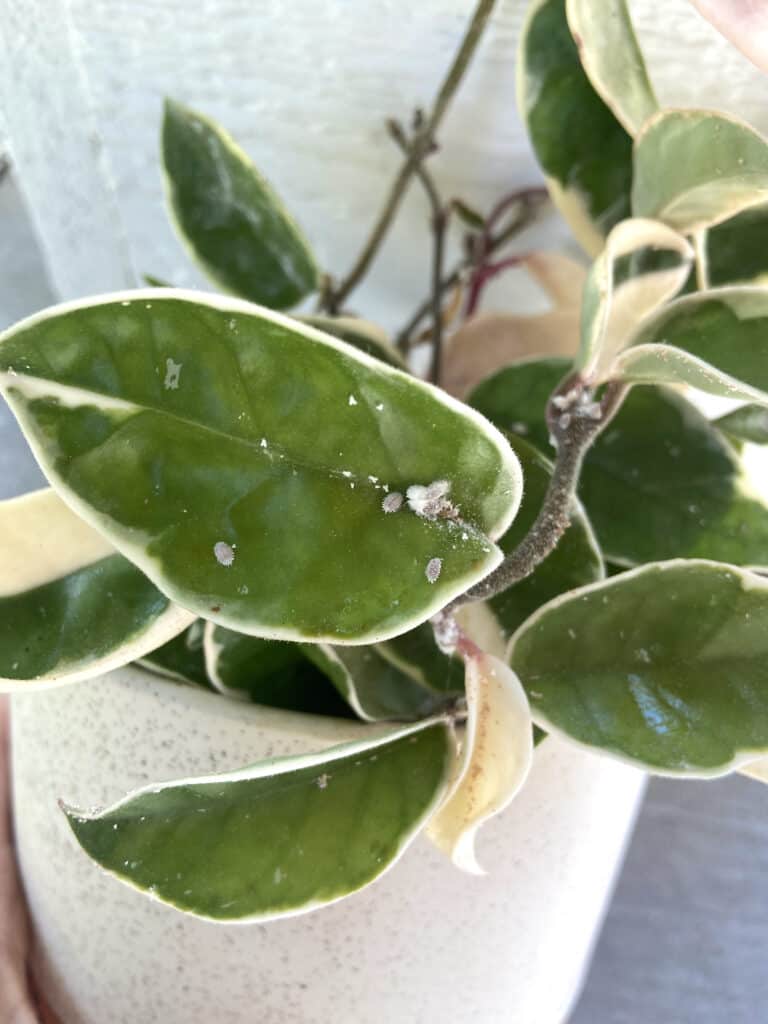
Luckily, these pests can be swiftly dealt with when caught early. Keep in mind the easiest way to stop pests from ever attacking your plant is by keeping them healthy; it is known that pests are least likely to attack a houseplant that is strong and healthy.
Most pests can be exterminated utilizing natural oils such as neem oil. Plant owners swear by spraying their afflicted plants with a few rounds of neem oil and wiping the foliage with it.
You may also use insecticidal soaps to wipe the surface of the leaves. Bear in mind that this method involves repeating a few times to ensure the population has been totally eradicated.
Some pests also leave a sticky residue on the affected houseplant which can be cleared away with a cotton ball soaked in rubbing alcohol.
Common Diseases in Monstera Siltepecana Plants
As an epiphytic plant, the monstera siltepecana can be prone to overwatering, which can stress the plant and open it up to disease. Overwatering can lead to bacterial and fungal diseases brought on by too much soil moisture.
The most prominent of these diseases is root rot. Other common diseases may include powdery mildew and leaf spot.
The excess water that is trapped within the root system can cause the roots of the mature monstera siltepecana plant to corrode and rot, which will slowly kill the plant itself.
If your monstera siltepecana plant is wilting and discolored, these are telltale signs of root rot. They also may be caused by over and under watering, excessive direct sunlight and fungus.
Luckily, root rot can be easily treated as long as it is caught early. Follow these step by step tips to grow a healthy plant:
- Remove the plant from its pot and inspect the root system. Rotten roots are soft in texture and have turned near-black from the rot.
- Using a sterile pair of shears, cut away at all signs of rot.
- When all rot has been cleared, repot your plant in a sterile plant pot that has multiple drainage holes. Fill the planter with aroid soil.
- For the next couple of weeks, keep the soil lightly moist to lessen the risk of shock.
Where to Buy
FAQ
No, the monstera siltepecana is not considered a rare plant. While they may be an uncommon find in most mainstream garden centers, it is quite common to shop online to purchase the monstera siltepecana plant from exotic plant sellers. In addition, propagating the monstera siltepecana is very easy, so these plants can be reproduced quite rapidly.
Yes, the monstera siltepecana is a fast growing plant. With the right care conditions (light, soil, water, and humidity), you can anticipate this plant reaching full maturity within 2 to 3 years.
While they are not as prolific as other members of the monstera genus, the monstera siltepecana earns a place of its own due to its sheer beauty and low maintenance.
The monstera siltepecana is a great choice for beginner plant owners who want to branch out into less popular species without having to sacrifice the time and energy to care for a finicky, hard to care for houseplant.
With the monstera siltepecana, you get a gorgeous plant that you will find you can grow without all the hassle.
Let’s check out other Monstera plants!

